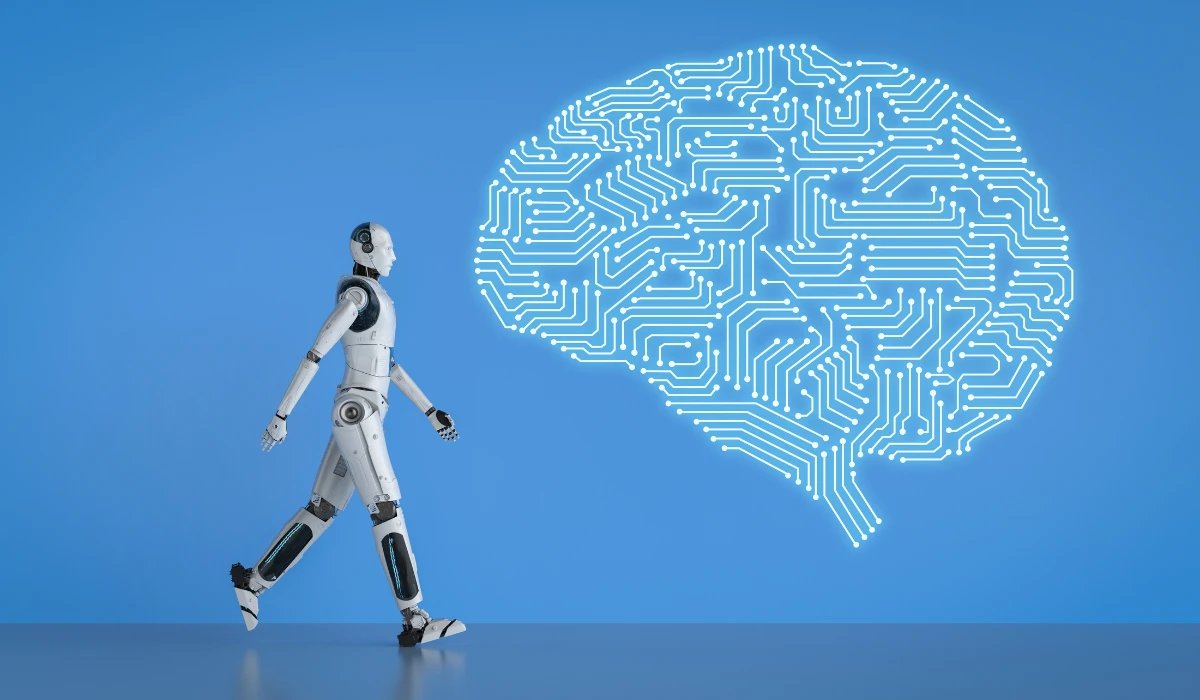Artificial Intelligence (AI) has transformed the way we live and work, offering unparalleled opportunities for efficiency, innovation, and problem-solving. Moreover, from automating repetitive tasks to providing predictive insights, AI tools and techniques are reshaping industries globally. Businesses, researchers, and creatives are now leveraging AI not just as a technological advantage, but also as a strategic asset to stay competitive in a rapidly evolving digital landscape.
One of the key strengths of AI lies in its adaptability. For instance, modern AI tools can learn from vast amounts of data, making decisions, recognizing patterns, and even generating content with minimal human intervention. Natural language processing (NLP), for example, enables machines to understand, interpret, and respond to human language, thereby revolutionizing areas such as customer service, content creation, and data analysis. Furthermore, integrating AI into existing workflows enhances accuracy, reduces errors, and allows professionals to focus on higher-value tasks.
Understanding Core AI Techniques for Maximum Efficiency

AI techniques form the backbone of any successful AI implementation. Machine learning (ML), deep learning, computer vision, and reinforcement learning are among the most widely used approaches today. In addition, machine learning enables systems to improve performance over time, while deep learning mimics the human brain’s neural networks to handle complex problems like image recognition and voice analysis.
Moreover, AI techniques are highly specialized. Reinforcement learning allows machines to learn through trial and error, making it ideal for robotics, autonomous vehicles, and game strategies. Meanwhile, computer vision interprets visual data from the environment, facilitating applications in healthcare, security, and augmented reality, and helping businesses maximize efficiency.
Popular AI Tools and Their Applications
AI tools are the practical implementations of these techniques, designed to simplify complex tasks. These tools range from AI-powered analytics platforms to creative software and automation systems, enabling businesses and individuals to leverage AI without extensive technical knowledge.
-
TensorFlow: A leading open-source framework for machine learning and deep learning projects.
-
PyTorch: Highly favored by researchers for its flexibility in building neural networks.
-
ChatGPT and GPT-based tools: Revolutionize content generation, customer support, and conversational AI.
-
H2O.ai: Simplifies predictive analytics for business intelligence applications.
-
Computer vision APIs: Analyze images and videos for object recognition, security, and healthcare diagnostics.
These tools are transforming industries, making AI accessible to both large enterprises and small startups. Their user-friendly interfaces and extensive documentation allow professionals from various fields to leverage AI without deep technical expertise.
How AI Enhances Productivity and Innovation
AI does not only automate repetitive tasks; it unlocks new opportunities for creativity and innovation. Furthermore, it allows teams to focus on strategic projects that require critical thinking. In addition, AI-driven insights can inspire novel solutions and improve overall productivity across industries.
-
Automation of routine processes: Reduces time and operational costs.
-
Predictive analytics: Helps businesses anticipate trends and consumer behavior.
-
Enhanced decision-making: Provides actionable insights based on large datasets.
-
Creative assistance: AI-generated designs, music, and marketing content accelerate ideation.
-
Improved customer experience: Chatbots and virtual assistants offer personalized support.
By integrating AI tools, organizations can innovate faster and focus on strategic growth, ultimately achieving higher efficiency and profitability.
Emerging Trends in AI Tools

The field of AI is constantly evolving, with new tools and techniques emerging every year. Some notable trends include explainable AI, generative AI, and multimodal AI systems. Explainable AI emphasizes transparency in AI decision-making, addressing ethical concerns and building trust among users.
Generative AI creates new content such as images, videos, and text, opening new creative possibilities. Multimodal AI combines different types of data, such as text, images, and audio, for comprehensive analysis and smarter predictions.These trends highlight how AI tools are becoming more sophisticated and accessible, enabling businesses and individuals to harness their potential in unprecedented ways.
AI Tools in Specific Industries: Healthcare and Finance

AI has profound applications in healthcare and finance, driving efficiency, accuracy, and innovation.In healthcare, AI tools assist in early diagnosis, personalized treatment plans, and medical imaging analysis. By analyzing large datasets of patient records, AI can detect patterns that humans might overlook, leading to more accurate diagnoses and better patient outcomes.
In finance, AI tools enable real-time fraud detection, algorithmic trading, and personalized financial advice. Banks and financial institutions use AI to analyze consumer behavior, reduce risks, and enhance decision-making processes, thereby improving customer trust and operational efficiency.
AI Tools for Education and Learning
Furthermore, AI is also transforming the education sector by not only providing personalized learning experiences but also supporting intelligent tutoring systems, thereby enhancing student engagement and outcomes, while equipping educators with better insights for decision-making.
-
Adaptive learning platforms assess student performance and adjust content accordingly.
-
Virtual tutors and chatbots offer instant support for queries.
-
AI-driven analytics identify learning gaps and provide targeted interventions.
-
Gamified learning applications enhance engagement and retention.
-
Automated grading and feedback save educators time for more meaningful interactions.
These tools empower educators and learners alike, creating a more efficient and interactive educational environment.
Ethical Considerations in AI Implementation
As AI tools become more integrated into our daily lives, ethical considerations are paramount. Issues such as bias, privacy, transparency, and accountability must be addressed to ensure trustworthiness and fairness. Organizations must implement AI responsibly by conducting regular audits, employing explainable AI frameworks, and maintaining strict data governance practices.
-
Bias mitigation: Ensure training data is diverse and representative.
-
Data privacy: Protect sensitive information with robust security measures.
-
Transparency: Make AI decision-making understandable to users.
-
Accountability: Define clear responsibilities for AI outcomes.
By adhering to ethical guidelines, AI can be a positive force, enhancing societal well-being while minimizing potential harm.
Practical Tips for Choosing the Right AI Tool
Ultimately, selecting the right AI tool depends on your objectives, as well as your technical expertise, while also considering your available resources. Moreover, by carefully evaluating these factors, you can ensure a more effective implementation and achieve better results, leading to smoother adoption across your team.
-
Identify the specific problem you want to solve with AI.
-
Assess whether a pre-built solution or custom model is more appropriate.
-
Evaluate scalability and integration capabilities.
-
Consider cost-effectiveness and return on investment.
-
Prioritize tools with strong community support and documentation.
By carefully choosing AI tools, businesses and individuals can maximize efficiency, innovation, and overall success.
FAQs
Q1: What are AI tools?
AI tools are software or platforms that implement artificial intelligence techniques to automate tasks, generate insights, or create content.
Q2: How do AI techniques differ?
Techniques like machine learning, deep learning, and reinforcement learning differ in methodology, application, and complexity.
Q3: Are AI tools ethical?
AI tools can be ethical if organizations implement proper governance, mitigate bias, and maintain transparency.
Conclusion
AI tools and techniques are revolutionizing industries by automating tasks, enhancing decision-making, and enabling innovation. Moreover, from healthcare to finance, education, and creative sectors, AI is providing tangible benefits across the globe. In creative fields, AI software for graphic design is transforming how designers work, enabling faster and more innovative visual content creation (learn more here).
As emerging trends like generative AI and explainable AI gain traction, it is crucial for professionals to adopt these technologies responsibly.Therefore, by choosing the right tools, addressing ethical considerations, and integrating AI strategically, businesses can stay competitive, efficient, and future-ready. In addition, AI enhances productivity, while also fostering creativity and innovation.
Consequently, organizations that leverage AI effectively can achieve faster growth.Similarly, AI tools can improve decision-making across departments. Interestingly, even while discussing AI, tools like ChatGPT can help plan experiences like visiting unique locations. For instance, one might use AI recommendations to discover Hamburg places to visit, combining technology with real-world exploration. Using an AI prompt writer can further personalize your travel plans and save time.











